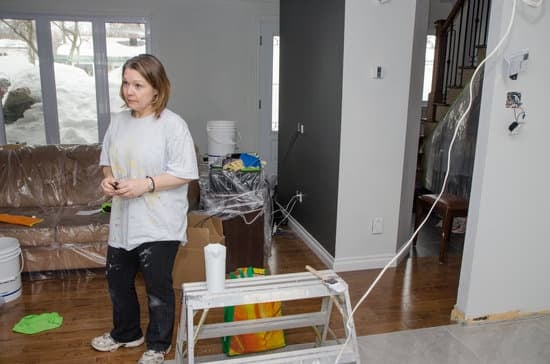How does a home improvement loan work? Home improvement loans are essential financial tools for homeowners who want to renovate or upgrade their properties. Whether it’s for a much-needed repair, an aesthetic upgrade, or a complete renovation, a home improvement loan can provide the necessary funds to make these projects possible. As the importance of maintaining and enhancing one’s property becomes increasingly evident, understanding how home improvement loans work is crucial for homeowners.
Home improvement projects are not only a way to increase the comfort and functionality of a home but also to boost its value. From repairing structural issues to upgrading kitchens and bathrooms, these projects play a vital role in maintaining property value and enhancing overall quality of life. This makes home improvement loans an important aspect of homeownership, especially when considering the long-term benefits they can bring.
In this article, we will delve into the world of home improvement loans and explore their different facets. From understanding the types of home improvement loans available to discussing eligibility requirements and loan processes, we will cover everything you need to know about how these loans work.
Additionally, we will discuss interest rates and terms, as well as repayment options, before outlining the benefits and considerations associated with taking out a home improvement loan. By the end of this article, you will have a comprehensive understanding of how home improvement loans function and whether they are right for your specific needs.
Types of Home Improvement Loans
When considering a home improvement project, it’s important to evaluate the different types of home improvement loans available to determine which one best fits your financial situation and needs. Home improvement loans can be divided into two main categories: secured loans and unsecured loans. Secured loans require collateral, such as your home or other assets, while unsecured loans do not.
Secured vs. Unsecured Loans
Secured home improvement loans typically offer lower interest rates due to the reduced risk for the lender, but they also come with the potential risk of losing your collateral if you default on the loan. Unsecured loans, on the other hand, don’t require collateral but usually have higher interest rates and stricter eligibility requirements.
Personal Loans vs. Home Equity Loans
Another decision to make when considering a home improvement loan is whether to opt for a personal loan or a home equity loan. Personal loans are generally easier and faster to obtain compared to home equity loans, but they often come with higher interest rates. Home equity loans may offer lower interest rates, but they require you to use your home as collateral.
Understanding the differences between these types of home improvement loans can help you make an informed decision on which option is best suited for your individual circumstances and financial goals. When contemplating how does a home improvement loan work, it’s crucial to carefully weigh the pros and cons of each type of loan before making a commitment.
Eligibility and Requirements
When considering a home improvement loan, it is important to understand the eligibility and requirements involved in the application process. Lenders have specific criteria that borrowers must meet in order to qualify for a home improvement loan. Here’s an overview of the key eligibility factors and requirements:
- Credit Score Requirements: One of the primary eligibility factors for a home improvement loan is the borrower’s credit score. Lenders typically look for a good to excellent credit score, which demonstrates responsible financial management.
- Income and Employment Verification: Lenders will also require proof of stable income and employment. This helps assess the borrower’s ability to repay the loan based on their current financial situation.
- Property Appraisal and Equity: For home equity loans, lenders will conduct a property appraisal to determine its current value and assess the available equity. The amount of equity in the property is an important factor in determining loan approval and terms.
Meeting these eligibility requirements is crucial in securing a home improvement loan with favorable terms. Borrowers should be prepared to provide documentation related to their credit history, income, employment, and property ownership when applying for a home improvement loan.
When aiming at improving your house, answering how does a home improvement loan work might be vital before diving into this financial commitment. Understanding what it takes to meet eligibility requirements can help borrowers prepare for the application process and increase their chances of approval.
In addition to meeting these requirements, it’s essential for borrowers to carefully consider their financial situation, budget, and long-term goals before taking out a home improvement loan. This will help ensure that they can comfortably manage monthly payments or lump sum repayment options while also maximizing the benefits of their home improvement project.
Loan Process
Applying for a home improvement loan can be a straightforward process if you are prepared and informed. Knowing the loan process will help you understand what to expect and how to navigate through the steps of securing funds for your home improvement project.
Applying for a Home Improvement Loan
To apply for a home improvement loan, you will need to gather necessary documentation such as proof of income, employment verification, property details, and credit history. You can apply directly through a bank or lending institution, or consider online lenders that specialize in home improvement loans. The application will typically require you to provide information about the specific improvements you plan to make, along with cost estimates.
Approval Process and Timeline
After submitting your application, the lender will review your documentation and assess your eligibility based on creditworthiness and ability to repay the loan. The approval timeline can vary depending on the lender and the complexity of your application. Some lenders offer quick pre-approvals, while others may require more time for underwriting.
Disbursement of Funds
Once your loan is approved, the lender will disburse the funds either directly to you or to a specified contractor. Some lenders may have specific requirements for fund disbursement, such as providing invoices or proof of completed work. It’s important to understand how the disbursement process works so that you can effectively manage your project finances.
Understanding the loan process is crucial in obtaining financing for your home improvement project. By being well-informed about how a home improvement loan works, you can confidently navigate through each step of the process and secure funding for enhancing your living space.
Interest Rates and Terms
When considering a home improvement loan, one of the most important factors to understand is the interest rate and the terms associated with the loan. Interest rates can significantly impact the overall cost of the loan, while the terms dictate how long you have to repay the borrowed funds.
Home improvement loans typically offer both fixed and variable interest rate options. A fixed interest rate remains the same throughout the life of the loan, providing stability and predictability in your monthly payments. On the other hand, a variable interest rate may fluctuate based on market conditions, which can lead to changes in your monthly payment amount.
In addition to interest rates, borrowers also need to consider the term of their home improvement loan. Loan terms can vary from as short as a few years to as long as 15 years or more, depending on the lender and the amount borrowed. Typically, longer loan terms result in lower monthly payments but higher overall interest costs.
Understanding how different credit scores can impact your eligibility for certain interest rates and terms is crucial when applying for a home improvement loan. Borrowers with higher credit scores often qualify for lower interest rates and better loan terms compared to those with lower credit scores.
Taking all these into account, it is crucial for borrowers to carefully evaluate their financial situation, project needs, and future plans before committing to a specific home improvement loan. A thorough understanding of how different interest rates and terms can affect their overall cost will enable borrowers to make informed decisions that are aligned with their financial goals.
| Home Improvement Loan | Interest Rates | Terms (Years) |
|---|---|---|
| Fixed Rate | 75% | 10 |
| Variable Rate | Ranges from 2.5%-6% | Ranges from 5-15 |
Use of Funds
When it comes to using the funds from a home improvement loan, borrowers have a variety of options. The purpose of a home improvement loan is to provide homeowners with the financial means to make necessary renovations or repairs to their property. Here are some common uses for the funds from a home improvement loan:
- Renovations: Many homeowners use their home improvement loan to fund major renovation projects such as kitchen or bathroom remodels, adding an extra room, or updating flooring and fixtures.
- Repairs: Home improvement loans can also be used to cover the cost of essential repairs such as fixing a leaky roof, repairing structural damage, or replacing old plumbing and electrical systems.
- Energy Efficiency Upgrades: Some borrowers choose to use their funds for energy-efficient upgrades such as installing solar panels, upgrading insulation, or replacing windows and doors with more energy-efficient options.
It’s important for borrowers to create a budget for how they plan to use the funds from their home improvement loan. Creating a detailed plan will help ensure that the money is used wisely and efficiently, and that all necessary expenses are covered.
Ultimately, how the funds are used is up to the homeowner; however, it’s important to consider how each proposed use may impact the overall value and function of the property. Working with a contractor or professional designer can also provide valuable insight into how best to allocate the funds for maximum impact.
Repayment Options
When it comes to repaying a home improvement loan, there are several options available to borrowers. One of the most common repayment options is through monthly payments. This allows borrowers to spread out the cost of their home improvement project over time, making it more manageable for their budget. Additionally, some lenders may offer the option for lump sum repayment, allowing borrowers to pay off the loan in one single payment.
Another important factor to consider when it comes to repayment options is the potential penalty for early repayment. Some lenders may charge a fee if the borrower pays off the loan before the agreed-upon term. It’s crucial for borrowers to review their loan agreement and understand any potential penalties for early repayment.
Additionally, borrowers also have the option to refinance their home improvement loan in order to take advantage of better terms or lower interest rates. This can be a beneficial option if market conditions change or if a borrower’s financial situation improves.
Overall, understanding the different repayment options and carefully considering which one best suits your financial situation is crucial when taking out a home improvement loan.
| Repayment Options | Data |
|---|---|
| Monthly payments vs. lump sum repayment | Monthly payments allow borrowers to spread out costs; lump sum repayment enables paying off in one payment. |
| Penalty for early repayment | Some lenders may charge fees if loans are paid off before term. |
| Options for refinancing | Borrowers can consider refinancing if better terms or lower rates become available. |
Benefits and Considerations
In conclusion, a home improvement loan can be a valuable tool for homeowners looking to finance renovations or upgrades to their property. The loan process typically involves assessing eligibility based on credit score, income verification, and property appraisal. There are various types of home improvement loans available, such as secured or unsecured loans, personal loans, and home equity loans. Understanding the differences between these options can help borrowers choose the best fit for their needs.
When considering how does a home improvement loan work, it’s important to factor in interest rates and terms. Borrowers should consider whether a fixed or variable interest rate is more suitable for their financial situation, as well as weigh the impact of their credit score on the interest rates offered. Additionally, understanding the repayment options like monthly payments or lump sum repayment can help in creating a budget that works for the borrower.
One of the most important benefits of taking out a home improvement loan is that the interest may be tax deductible. However, it’s crucial to also consider potential risks and drawbacks such as the impact on property value and penalties for early repayment. Overall, being well-informed about how does a home improvement loan work can empower homeowners to make informed decisions when investing in their properties.
Frequently Asked Questions
What Is the Average Length of a Home Improvement Loan?
The average length of a home improvement loan typically ranges from 5 to 12 years, although some lenders may offer shorter or longer terms. The specific length will depend on the lender and the borrower’s financial situation.
What Credit Score Is Needed for a Home Improvement Loan?
Generally, a credit score of 620 or higher is needed to qualify for a home improvement loan. However, some lenders may accept lower scores if the borrower has other strong financial qualifications, such as a high income or significant assets.
Can You Use a Home Improvement Loan for Other Things?
While home improvement loans are intended for funding home renovation or repair projects, some lenders may allow borrowers to use the funds for other purposes. However, it’s important to carefully review the terms of the loan and understand any restrictions before using the funds for purposes other than home improvement.

I’m thrilled to have you here as a part of the Remodeling Top community. This is where my journey as an architect and remodeling enthusiast intersects with your passion for transforming houses into dream homes.





